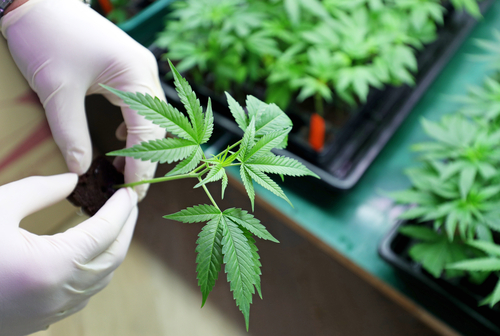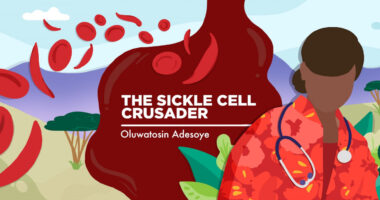Marijuana Use Common in Sickle Cell Patients, Highlighting Need for More Research, Study Shows

Many sickle cell disease (SCD) patients use marijuana for its medicinal benefits, according to an anonymous survey by researchers from Yale New Haven Hospital and Yale University.
These results show that there is a need to study the effects of marijuana on these patients and to consider whether sickle cell disease should be included in the list of conditions that can be legally treated with medical marijuana, the researchers suggest.
The study, “Marijuana Use in Adults Living with Sickle Cell Disease,” was published in the journal Cannabis And Cannabinoid Research.
In the U.S., the medical use of marijuana to alleviate pain caused by several health conditions is now legal in many states. However, only three states — Connecticut, Ohio, and Pennsylvania — include sickle cell disease as an approved health condition for medical marijuana.
Acute pain is one of the main symptoms of SCD, a genetic blood disorder. Numerous episodes of acute pain can lead to chronic pain in these patients. According to the authors, SCD patients seek out and use marijuana to either avoid opioid use or because other medications are ineffective in relieving their pain.
In this study, the researchers included 58 SCD patients, ages 21 or older, who were seen at an academic medical center, and anonymously surveyed them for the use of marijuana, cocaine, and phencyclidine for pain relief.
At the center, urine drug testing is part of a routine analysis for patients who are prescribed opioids, particularly those who show changes in behavior that could indicate drug abuse. Researchers analyzed this data as well for patients participating in the study.
Of the total study population, 42% reported using marijuana within the past two years. Most of these patients used it for medicinal purposes to help with pain, anxiety, appetite, mood, and sleep. A small proportion of these patients used it to get high. In addition, 79% of these patients reported taking less of other pain medications after marijuana use.
Urine analysis data was available for 57 patients (28 men, 29 women) in this study. The researchers found that 18% (10 patients) tested positive for cannabinoid (the active ingredient in marijuana) only, 5% (three patients) tested positive for cannabinoid and cocaine/phencyclidine, and 12% (seven patients) tested positive for cocaine and/or phencyclidine only.
Seven women and six men were among the patients who tested positive for cannabinoid use.
According to the researchers, their study was conducted prior to sickle cell disease becoming a qualifying condition in the state of Connecticut. They noted that once marijuana was legalized for sickle cell disease in the state, 44 patients requested a medical marijuana certificate over the course of 1.5 years.
“The high rate of requests for certification for medical marijuana, including requests from non-marijuana users, suggests that our patients are interested in marijuana as a potential symptomatic treatment for the sickle cell disease,” they said.
Results indicate that the medicinal benefits of marijuana appear to be the main reason for its use by many adults, emphasizing a need for scientific and clinical research on the ability of cannabinoids to provide symptomatic relief for patients with SCD.
“In the interim, use of illicit marijuana places persons living with sickle cell disease at risk for both exposure to poisonous contaminants and arrest and incarceration. More widespread inclusion of sickle cell disease as a qualifying condition for medical marijuana might reduce the personal and social costs of illicit marijuana use,” the team concluded.






